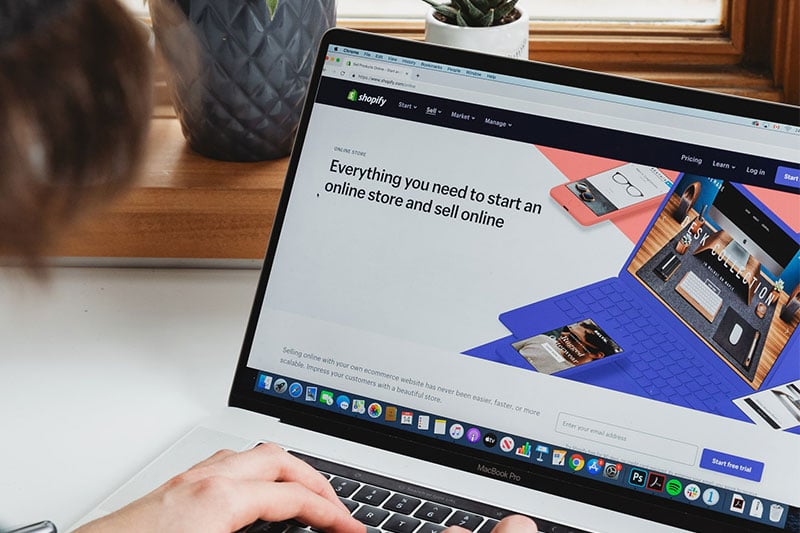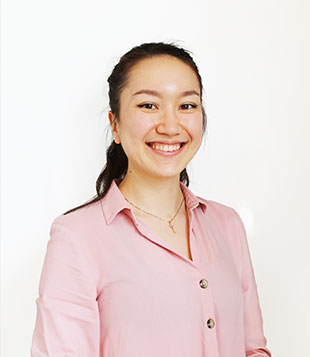Venture capitalist and self-made tech millionaire Lucas Asher weighs in on the biggest investment trends in the post-COVID global economy, from Amazon’s competitors to space commercialisation.
Lucas Asher is a serial entrepreneur and one of the most prominent millennial investors in the world. As CEO of venture capital firm Tower Equity (one of the seven startups he’s founded to date), Lucas has demonstrated a remarkable knack for sniffing out billion-dollar – if not, trillion-dollar – industries on the cusp of a breakthrough. He is an early-stage investor in over 35 high-profile tech companies, including SpaceX, Spotify, Airbnb, Slack, Pinterest, Palantir, and Adaptive Biotechnologies, to name just a few; with a fast-growing portfolio of eight IPOs. Here are the seven most disruptive trends to watch in order to thrive in the “new normal”.

Lucas Asher, Tech Millionaire & Venture Capitalist (Photo Credit: Kiana Govind)
1. The Sharing Economy Will See a Surge in M&As as It Consolidates
The COVID-19 pandemic has dealt a heavy blow to the global economy, including its golden child, the so-called “sharing economy”. Titans Uber and Airbnb have since suffered dramatic losses of revenue owing to worldwide travel restrictions and social distancing. At the same time, countless other sharing-economy businesses have thrived, providing services that cater to virus-wary, stay-at-home consumers, such as cleaning and delivery services.
The past few months have seen an uptick in mergers and acquisitions (M&As) as sharing economy firms either buckle down or cut their losses. In July, for example, Uber acquired food-delivery service Postmates for USD 2.65 billion in stocks. The deal combines Postmates with its own food-delivery arm, Uber Eats, giving the ride-hailing company a much-needed jolt.
“Ultimately, what this shows is an oversaturated marketplace consolidating in order to be disciplined,” Lucas explains of the trend. “As legendary investor Warren Buffett once said, ‘Only when the tide goes out do you discover who’s been swimming naked.’ And that’s what a pandemic does: it gets rid of all the weak contenders (companies that just build ‘fluff’), and strengthens those focused on the bottom line – providing a viable service that people are willing to pay for.” Although a painful contraction is to be expected in this climate, Lucas remains hopeful that it will pave the way for “big winners” in the long term.
2. Amazon Will Face Increased Competition From Smaller E-Commerce Platforms
While the main theme of today’s sharing economy is consolidation, Lucas believes that e-commerce will see the opposite. “E-commerce is actually becoming less centralised on domains like Amazon, Walmart, and Alibaba, and tending more towards decentralisation and fragmentation instead.” This is largely thanks to Shopify, a commerce platform that helps small and medium-sized businesses get in on the online action by empowering them to differentiate their brand and set-up their own stores.
As of late 2019, Amazon commanded approximately 37% of US retail e-commerce sales, while Shopify ranked second with just under 6% market share, achieving an astounding CAGR of 50%. Shopify also reported a 62% rise in new store creations from March 13 to April 24 (compared to the prior six weeks), as pure-play e-commerce brands, omnichannel retailers, drop shippers, digital goods merchants and more flocked to their platform.
In light of accusations that Amazon puts market dominance ahead of customer satisfaction, Lucas urges entrepreneurs to rise to the challenge of competing head-on with the behemoth. “You don’t need to be scared of Amazon,” he affirms. “In fact, you can do a better job by being really focused on your customer base and serving them in ways Amazon hasn’t done, like creating reward programmes and adding personal touches.”

3. The SaaS Sector is Poised for Tremendous Growth
“The fastest return-on-investment will come from SaaS (Software as a service) businesses,” according to Lucas. Also known as “on-demand software”, SaaS lets users access apps over the Internet, without the hassle of having to download software on their desktop PC or business network to run and update. This makes it a natural fit for an increasingly digitised, global workforce.
In the wake of COVID-19, demand for cloud-based services that facilitate the transition to remote work has skyrocketed, with worldwide public cloud revenue forecasted to grow 6.3% in 2020, totalling USD 258 billion. But Lucas claims that SaaS is still “massively undervalued” as a sector: “Cloud-based services like Zoom, Slack, and Salesforce are in their infancy in terms of value. I think there is huge untapped potential in developing software tools to help teams collaborate more effectively while working from home.”
What’s more, no one owns this marketplace. “Yes, Microsoft, Google, and other tech giants are in it, but there are so many services to provide, whether it be in supply chains, compliance, legal, customer service, or sales. If you look at Qualtrics, which sold for a whopping USD 8 billion to SAP in 2018, they provided a customer survey software that allows airlines (among others) to track customer satisfaction even after their flight.” Such vertical-specific SaaS solutions represent the largest segment of the overall software market, as every company in every industry “is going to need a contingency plan which can only be executed through scalable cloud-based technology stacks”.
4. Automation is Driving a Massive Shake-Up of the Logistics Industry
Whether we like it or not, automation and autonomous systems are already here, “it just hasn’t been fully deployed at scale yet,” Lucas says. In particular, he speculates that Robotic Process Automation (or RPA) “is going to be enormous”, having already invested in industry front-runner UiPath, which reported an ”eye-popping” USD 10.2 billion valuation in July. The main aim of RPA is to automate repetitive tasks – “anything copy-paste or spreadsheet-oriented” – with machine learning. Not only would it drastically reduce the scope of error, but it would also free up staff to focus on more stimulating tasks that increase ROI for the companies who utilise them, such as marketing and maintaining customer relationships. “If a bot can work 24 hours a day and not get tired or make mistakes, it makes sense to let bots do the redundant tasks, while the humans administer them,” Lucas says. “This would open up a golden era for people to learn new skills and generally get a lot more pleasure out of life.” It is estimated that 85% of enterprises will implement some form of RPA over the next two years and that global RPA market size will reach USD 2.35 billion by 2027, up from USD 477 million in 2018.
Companies within the logistics and shipping industry are positioned well for RPA uptake. Despite playing a pivotal role in international trade, the sector is one of the least modernised and continues to rely on manual legacy processes like phone, fax, spreadsheets, and emails. With RPA, inventory tracking, freight management, invoicing, and so on have the potential to be executed 5-10 times faster with an average of 37% fewer resources, enabling businesses to meet the burgeoning demand for same-day and next-day delivery. “That’s why I’ve invested in Flexport, a modern logistics company that offers ‘digital-first’ solutions for a full range of services, including ocean, air, truck and rail freight, drayage and cartage, warehousing, customs brokerage, financing, and insurance”.

5. Firms that Leverage API Protocols to Enable Third-Party Collaboration will Profit
In a recent Harvard in Tech webinar, Lucas argues that “the next generation of billionaires will be created through protocols, not applications”. Put differently, wealth creation is no longer about pieces of software (apps) designed for end-users, but rather, about the transmission of data between different software intermediaries. The terms of this transmission – the kinds of calls or requests that can be made, how to make them, the data formats that should be used, the conventions to follow, etc. – are defined by a type of protocol called an application programme interface, or API.
By allowing potential partners to tap into a firm’s data and services in ways that are controlled, predictable, and reliable, APIs act as the ‘connective tissue’ linking ecosystems of technologies and organisations. Examples include Plaid, Twilio, and Braintree; each offering a slate of products (e.g. instant messaging, payment solutions) that developers can leverage to create easy and accessible experiences for their own users. “It doesn’t have to be a winner-takes-all contest,” he shares. “There is room for collaboration, but you can’t collaborate as an application. You have to collaborate as a protocol or API. If Stripe had just built an application, and not an API that everyone can tap into to power their applications, it wouldn’t be the multibillion-dollar company it is today.”
6. FinTech Will Become Increasingly Sophisticated with AI Integration
Artificial intelligence (AI) is disrupting the financial services industry like never before. As of June 2020, the global AI in FinTech market is expected to reach USD 22.6 billion by 2025, up from USD 6.7 billion in 2019, and is on track to expand at a compound annual growth rate (CAGR) of 23.37% over the next five years.
AI improves results by applying methods derived from aspects of human intelligence, but beyond human scale. In the context of FinTech, this relates to the automation of payment processes so as to improve precision and customer engagement. Lucas is particularly bullish on deploying AI to help modernise data architectures and lower costs in the FinTech space. “I’m constantly amazed by how stupid and antiquated my software for finance is,” he comments. “To give you an example: every product you buy is generally tied to a skew in a database, which is then scanned at registers to reveal the price of objects in the world.” While optimised for transaction speed and scale, this model isn’t designed to anticipate and act on real-time data streams. “What’s needed is a central database with smart AI-based protocols that inform customers if they’re getting a fair value; if their transactions are keeping with market rates, or if they’ve been overcharged. All of this can be built, it’s just that no one’s done it yet!”
7. Space Commercialisation Will Generate Millions of Jobs
Up until a few years ago, humans living on another planet was the stuff of sci-fi films. Today, thanks to advances in technology, renewed public interest, and billions of dollars’ worth of private funding by such individuals as Elon Musk, Jeff Bezos, and Richard Branson, it’s no longer a question of ‘if’, but ‘when’. “I don’t see a technical reason why we can’t get the first person on Mars by 2022 or sooner,” Lucas predicts.
As such, the reality of a multi-trillion-dollar space economy and job market could be just around the corner. “Space will undoubtedly be the largest economy – there’s no debate about it,” he says. “After a Starlink IPO [a division of SpaceX], I plan on building businesses that support the colonisation of Mars, from biodomes and agriculture to propulsion and mining. So, even though hundreds of millions of jobs will be lost to automation, we’re going to see hundreds of millions more jobs opening up (and skills being transferred) because of space commercialisation. For me, that’s what makes life exciting: to envision having a human base on Mars, and do it in our lifetime.”

Wrapping Up
The idea of disruption excites some and terrifies others. With the stakes now seemingly higher than ever before, it’s important to consider how these seven trends will help or hurt your chosen industry, while never losing sight of your capacity for resilience. As Lucas rightly concludes: “When we talk about the state of our economy, let us not forget that ‘the economy’ is people. If you take away the people, you don’t have an economy. So, as long as people are able to provide services and build tools, the economy is coming back. I’m bullish on the economy because the economy is people, and I’m bullish on people.”
Banner Photo Credits: Kiana Govind
Related Articles
5 Tips for First Time Personal Investors
8 Tips on Becoming a Successful Angel Investor, from Jason Calacanis
Financial Planning: 8 Steps to Creating A Solid Financial Plan





